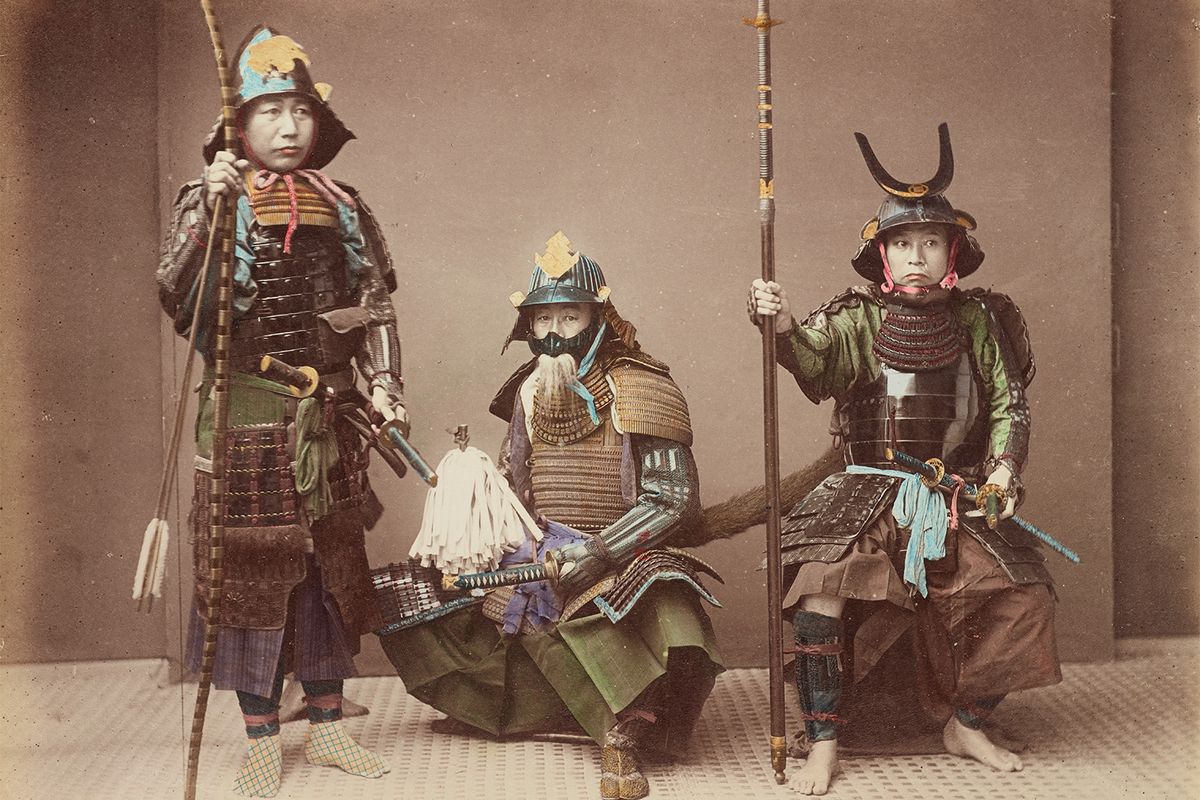Table of Contents
Toggletheinvented.co – The history of samurai is an essential part of Japanese culture that developed during the feudal era. Samurai were a warrior class that played a significant role in Japan’s military and political history. From the Heian period to the Meiji Restoration, samurai underwent various transformations in social and military systems. Beyond being warriors, they followed a code of ethics known as Bushido, or “The Way of the Warrior.”
Origins of the Samurai
The Emergence of Samurai in the Heian Period
The history of samurai began in the Heian period (794–1185) when Japan experienced decentralization of power. During this time, the emperor gradually lost control over remote regions, leading local clans to form military forces to protect their territories. This was when the first samurai emerged as mercenaries serving feudal lords.
In the early development of samurai history in Japan, their primary role was to protect the lands of the daimyo (feudal lords) and fight in clan conflicts. Their expertise in martial arts, particularly in wielding the katana sword, became their defining trait.
The Role of Samurai in the Kamakura Period
In the 12th century, the Minamoto and Taira clans fought for dominance over Japan. The Minamoto clan’s victory in the Genpei War (1180–1185) marked the beginning of the Kamakura Shogunate (1185–1333), where samurai became the ruling class.
The first shogun, Minamoto no Yoritomo, introduced a military government system known as bakufu, granting significant power to the samurai. During this period, the Bushido code evolved further as a moral guideline for warriors.
The Golden Age of Samurai
Samurai in the Muromachi Period
During the 14th century, the power of the samurai increased under the Ashikaga Shogunate (1336–1573). Although civil wars were frequent, this era also witnessed the flourishing of samurai culture, including martial arts and Zen Buddhism, which influenced Bushido philosophy.
One of the most crucial events in samurai history was the Ōnin War (1467–1477), which led Japan into the Sengoku period (Warring States Era). During this time, the daimyo competed for power, and samurai played a crucial role in battles.
Samurai in the Edo Period
In the early 17th century, Tokugawa Ieyasu won the Battle of Sekigahara (1600) and established the Tokugawa Shogunate (1603–1868). This period brought significant changes to samurai history.
With the end of inter-clan warfare, samurai no longer served as warriors. Instead, they transitioned into bureaucrats and government officials while maintaining their high social status. The Bushido code was further strengthened, emphasizing loyalty, honor, and devotion to one’s lord.
Decline and End of the Samurai Era
The Meiji Restoration and the Fall of the Samurai
In the mid-19th century, Japan faced pressure from Western nations to open its borders for trade. This led to the Meiji Restoration (1868), which ended the Tokugawa Shogunate’s rule.
The Meiji reforms abolished the feudal system and replaced the samurai class with a modern military. Laws banning the carrying of katana swords and the abolition of samurai stipends caused many samurai to lose their status.
One of the largest rebellions in samurai history was the Satsuma Rebellion (1877), led by Saigō Takamori. This resistance ended in defeat, marking the final chapter of Japan’s warrior class that had lasted for centuries.
The Influence of Samurai on Japanese Culture
Although the samurai no longer exist as a social class, their legacy remains strong in modern Japanese culture. Some of the major influences of samurai history include:
- Martial Arts: Many kenjutsu (swordsmanship) techniques evolved into kendo, which is still practiced today.
- Bushido Code: The ethics of Bushido continue to shape Japanese values, such as discipline, honor, and loyalty.
- Pop Culture: Samurai history is frequently adapted into films, anime, and manga, such as Rurouni Kenshin and Seven Samurai.
The samurai’s legacy remains deeply embedded in Japan’s history and continues to inspire people around the world.
